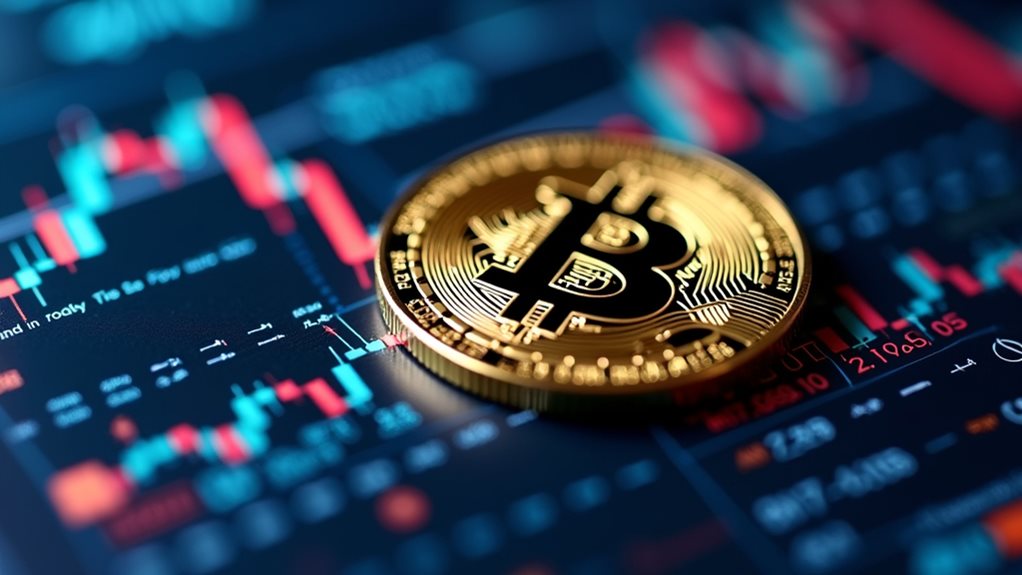Bitcoin smashed through $120,000 on July 14, 2025, hitting $122,379 before reality kicked in. The breakthrough triggered over $700 million in liquidations because, apparently, everyone thought they were smarter than the market. Meanwhile, MicroStrategy keeps buying—they’re up to 461,000 coins now—while BlackRock’s ETF faced redemptions despite holding 625,000 BTC. Even institutional giants can’t escape this chaos. The market’s schizophrenic behavior reveals deeper forces at work.

While most people were still wrapping their heads around Bitcoin hitting six figures, the digital currency decided to throw another curveball and blast past $120,000 in mid-2025. The peak hit $122,379 on July 14, because apparently Bitcoin doesn’t believe in taking breaks.
This wasn’t exactly effortless sailing though. Earlier in the year, Bitcoin had already flexed near $109,000 following some political drama, only to crash below $90,000 within weeks. Classic Bitcoin behavior, really. The volatility that once made traders lose sleep has actually calmed down compared to 2021, with daily price swings cutting in half. Don’t get too comfortable though. Fixed supply constraints make Bitcoin increasingly attractive as an inflation hedge.
Classic Bitcoin behavior—flexing near six figures one moment, crashing the next, keeping traders perpetually on edge.
The $120K breakthrough came with fireworks. Over $700 million in liquidations hit the market, creating what analysts called a short squeeze. Those betting against Bitcoin got absolutely crushed. Technical analysts are now eyeing support around $110,756, with dreams of $125,000 and $130,000 dancing in their heads.
Institutional players keep playing their games despite the chaos. MicroStrategy grabbed another 11,000 BTC in the first quarter, pushing their stash close to 461,000 coins. BlackRock’s Bitcoin ETF ballooned to 625,000 BTC by mid-year. These aren’t exactly small potatoes.
ETF flows tell a messy story though. Early 2025 saw around $4.5 billion flooding in, then February and March brought outflows. Even BlackRock had some redemptions. The crypto market giveth, and it taketh away.
What’s driving this madness? The usual suspects. Federal Reserve policies, global trade tensions, regulatory announcements. Bitcoin still jumps at shadows from traditional markets. When the S&P 500 sneezes, crypto often catches a cold. Geopolitical tensions continue to amplify the rapid sentiment shifts that make Bitcoin markets particularly unpredictable during major global events.
Interestingly, Bitcoin’s volatility now resembles crude oil more than wild altcoins. That’s progress, sort of. The digital currency is growing up, even if it still throws tantrums. The February 2025 period particularly highlighted Bitcoin’s evolving nature, with realized volatility hitting a 29% floor that marked the lowest level in 18 months.
Mid-tier holders with 100 to 1,000 coins increased their market share slightly. Smart money seems confident, even as retail investors probably check their portfolios through their fingers. Global money supply growth of 9% and a weakening dollar provided some tailwinds, but Bitcoin remains Bitcoin—unpredictable, dramatic, and absolutely exhausting to follow.








